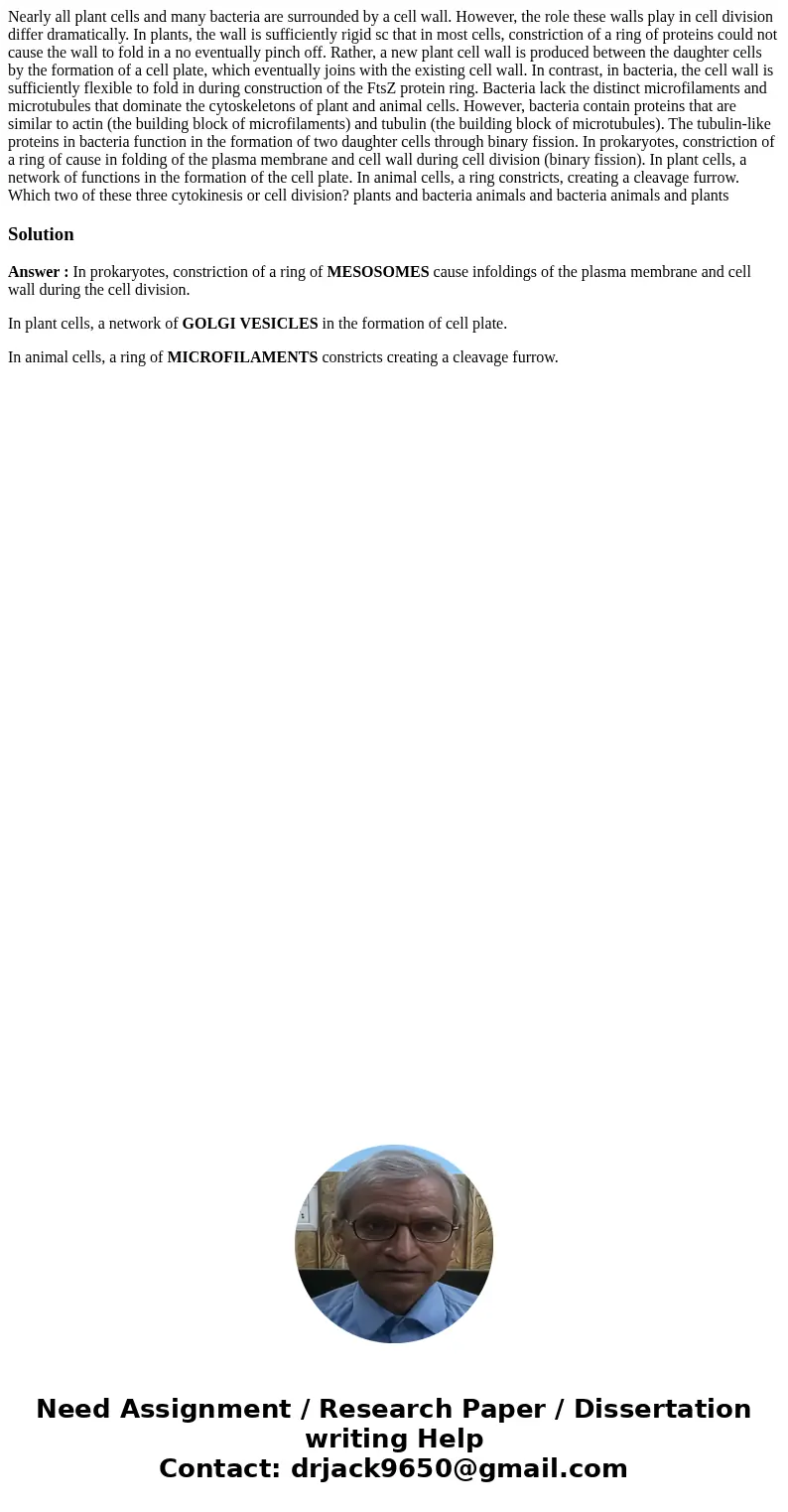Nearly all plant cells and many bacteria are surrounded by a
Nearly all plant cells and many bacteria are surrounded by a cell wall. However, the role these walls play in cell division differ dramatically. In plants, the wall is sufficiently rigid sc that in most cells, constriction of a ring of proteins could not cause the wall to fold in a no eventually pinch off. Rather, a new plant cell wall is produced between the daughter cells by the formation of a cell plate, which eventually joins with the existing cell wall. In contrast, in bacteria, the cell wall is sufficiently flexible to fold in during construction of the FtsZ protein ring. Bacteria lack the distinct microfilaments and microtubules that dominate the cytoskeletons of plant and animal cells. However, bacteria contain proteins that are similar to actin (the building block of microfilaments) and tubulin (the building block of microtubules). The tubulin-like proteins in bacteria function in the formation of two daughter cells through binary fission. In prokaryotes, constriction of a ring of cause in folding of the plasma membrane and cell wall during cell division (binary fission). In plant cells, a network of functions in the formation of the cell plate. In animal cells, a ring constricts, creating a cleavage furrow. Which two of these three cytokinesis or cell division? plants and bacteria animals and bacteria animals and plants
Solution
Answer : In prokaryotes, constriction of a ring of MESOSOMES cause infoldings of the plasma membrane and cell wall during the cell division.
In plant cells, a network of GOLGI VESICLES in the formation of cell plate.
In animal cells, a ring of MICROFILAMENTS constricts creating a cleavage furrow.

 Homework Sourse
Homework Sourse